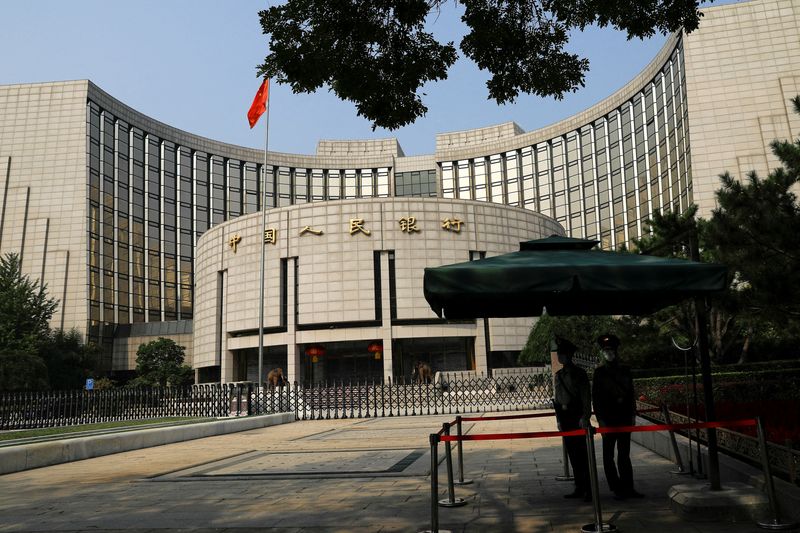
© Reuters. FILE PHOTO: Paramilitary police officers stand guard in front of the headquarters of the People’s Bank of China, the central bank (PBOC), in Beijing, China September 30, 2022. REUTERS/Tingshu Wang/File Photo
USD/CNY
-0.01%
Add to/Remove from Watchlist
Add to Watchlist
Add Position
Position added successfully to:
Please name your holdings portfolio
Type:
BUY
SELL
Date:
Amount:
Price
Point Value:
Leverage:
1:1
1:10
1:25
1:50
1:100
1:200
1:400
1:500
1:1000
Commission:
Create New Watchlist
Create
Create a new holdings portfolio
Add
Create
+ Add another position
Close
BEIJING/SHANGHAI (Reuters) – China’s central bank is expected to stand pat on a key policy rate when rolling over the maturing medium-term loans in just over a week from now, a Reuters survey showed, as the authorities appear to be keen to maintain currency stability.
Market participants believe Beijing is striking a delicate balancing act to support the economy. Signs of persistent deflationary pressure calls for more stimulus measures as fast falling prices have raised real borrowing costs, but aggressive monetary easing could revive depreciation pressure on the Chinese currency and trigger capital outflows.
With investors pushing back the start of the U.S. Federal Reserve monetary easing to May from March, traders expect the still-wide yield differentials between the world’s two largest economies would continue to constrain Beijing’s easing efforts.
In a Reuters poll of 31 market watchers conducted this week, 22, or 71%, of all respondents expected the People’s Bank of China (PBOC) to keep the interest rate on the borrowing cost of the one-year medium-term lending facility (MLF) loans unchanged on Feb. 18. The remaining nine participants projected a marginal interest rate reduction.
A total of 499 billion yuan ($69.36 billion) worth of MLF loans are due to mature this month.
The week-long Lunar New Year public holidays will start on Feb. 10, and the loan rollover is expected to take place on Feb. 18, which is a makeup working day.
“We are not of the view that the PBOC will implement an MLF rate cut after the week-long holiday,” said Samuel Tse, economist at DBS.
“The policymakers are awaiting the first cut from the Fed to maintain a stable yuan exchange rate.”
Some traders and analysts said Chinese banks could choose to reduce their benchmark lending loan prime rates (LPRs) to stimulate credit demand and prop up the economy.
“Post the Chinese New Year holiday, monetary policies could be more flexible – we are expecting an asymmetric LPR cut this month following the deposit rate cut last December and the 50-basis-point reserve requirement ratio (RRR) cut,” Citi analysts said in a note.
“Such a package is unlikely to be a ‘bazooka’ stimulus. However, a timely and carefully implemented package could still be able to set the stage for mild reflation this year.”
The central bank delivered a deep cut to bank reserves earlier this month, in a move that will inject about $140 billion of cash into the banking system.
China is due to release its monthly LPR fixings on Feb. 20.
($1 = 7.1945 Chinese yuan)
Source: Investing.com

























